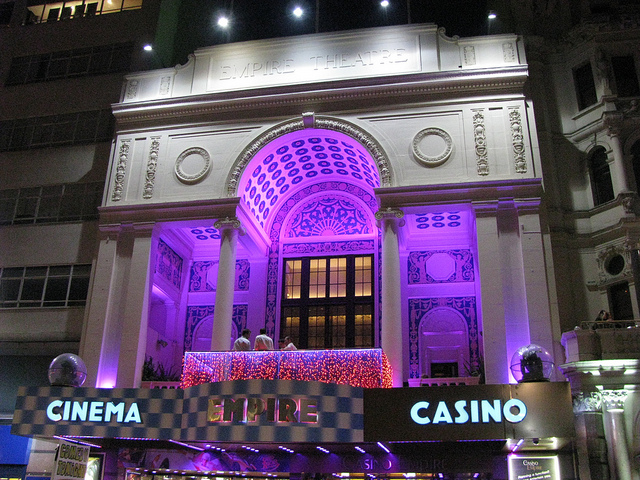It’s amazing what you can pack into a day: our sightseeing tour on the Number 11 bus had introduced us to some of London’s most important sights. During our walking tour we explored Buckingham Palace, the Mall, Trafalgar Square and Whitehall, arriving just in time for Big Ben ringing in the noon hour. Then we took a sightseeing tour on the Thames River and got to know the city from a completely different perspective. With only three days in London we were trying to cover as many sights as possible, and so far on our second day we had definitely managed to squeeze in a lot of important landmarks.

Tower Bridge
After rushing to catch the Docklands Light Railway to our meeting point at Whitechapel, we connected with our walking tour a bit late, but we were ready to get to know “London’s unknown East End”. The tour was led by Harry Jackson, a passionate Londoner who grew up in Liverpool in the 1960s. Harry moved back to London in 1973 and gained extensive knowledge of the city during the 1980s when he worked for London Transport. This was also the time when he became a certified Blue Badge tourist guide. Blue Badge guides go through a two year training program at the Institute of Tourist Guiding and provide reliable and professional guiding services all over the UK. We joined the tour a bit late, and Harry was already in full swing, enthralling a curious crowd of about 20 people.

Harry Jackson, our expert Blue Badge tour guide
In a city with so many diverse and historic areas, London’s East End is one of the most fascinating neighbourhoods. Part of the area was used as graveyards during Roman times, and during the Middle Ages villages started to sprout up east of the medieval walled City of London. From the beginning many noxious industries were located here: from tanneries to breweries, foundries, gun powder factories and bone processing facilities to make soap and china, the East End attracted many dangerous and unpleasant industries.

Street in the East End
People from the countryside started flocking into this area, and successive waves of immigrants also started to call the East End their home. In the late 17th century large groups of French Huguenots, Protestant refugees from France, set up shop here and started many silk-weaving businesses. Irish Weavers came shortly after, and in the latter half of the 19th century Ashkenazi Jews fleeing the pogroms of Tsarist Russia settled in this area. Many local residents started working in the docks and shipyards in the east side of London. The most recent population influx stems from a large number of Bangladeshi immigrants who have called this area their home.

Three officers of the London Metropolitan Police
In his well-spoken and entertaining manner, Harry showed us some sites connected to the famous Jack the Ripper, an unidentified serial killer who is thought to have been responsible for eleven murders in London’s East End in late 1888. In rather gruesome details he started telling us about some of these horrific crimes, most of which were committed against prostitutes whose throats were slit and whose bodies subsequently were brutally mutilated and eviscerated.

London’s East End
During the late 19th century the East End of London was a cesspool of poor or homeless people who suffered from highly exploitive work conditions. Prostitution and street crime were rampant. The series of Whitechapel Murders terrified the local population, received extensive coverage in the local press and became the stuff of legends and urban myths. Due to the anatomical knowledge applied in the murders, one theory supposed that Jack the Ripper was a medical doctor. Despite the fact that in some cases police arrived on scene just minutes after the crime, the perpetrator was never found.

London’s East End
At a stop at the local Royal London Hospital, Harry filled us in on the story of another colourful personality related to London’s East End: Joseph Carey Merrick, better known as “the Elephant Man”. Born in 1862 he suffered from severe facial disfigurements that left him no other choice than to work in a sideshow once he became an adult. Harry pointed out that Merrick worked in a sideshow in a local Whitechapel shop, but decided to go to Belgium in 1886 where he ended up being mistreated, and most of his earnings were stolen by the man who ran the show.

London’s East End
Prior to leaving for Belgium, Merrick had obtained the business card of a local surgeon who was working at the Royal London Hospital. Dr. Frederick Treves, who was later knighted, took a liking to the Elephant Man, and after Merrick’s return from Belgium, he arranged for him to get permanent living quarters at his hospital where Merrick lived until his premature death in 1890 at only 27 years of age.
As we walked through the narrow streets of Whitechapel Harry also showed us different locations that were hotbeds of political activism and anarchism in the late 19th and early 20th century. Based on its working class roots, London’s East End had had a long history of social activism and labour organization. Even as early as after the arrival of the Huguenot weavers in the late 1600s, reading clubs were established that morphed into labour and political organizations.

East End apartment block




